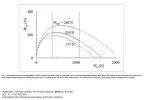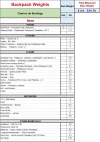Ungawawa
Active Member
- Time of past OR future Camino
- 2017-20: Francés, Norte, Francés, Portuguese Lisbon Coastal, Portuguese central
Several times I've been given to wonder where this rule that you should have your backpack weighing 10% of your bodyweight actually came from. What's more, why do so many people keep repeating it without even thinking about it? It's become a bit like one of those urban myths that people look up on snopes.com!
Basically my gripe is that it only applies if you're a reasonably tall male of about 75-80 kilos. Then nice - you get to carry a backpack of optimum weight 7.5-8 kilos. But stray too far from this figure and the results make no sense. Would you really tell a short slim woman of 45 kilos to only bring 4.5 kilos with her on the Camino? That wouldn't get her much further than her backpack, a sleeping bag and a pair of crocs! Likewise, I've met plenty of taller strong guys happily carrying 10 or 11 kilos with them who weigh nothing close to 100-110 kg. In fact, if they did, they'd be struggling a lot more!
So where did this strange rule come from and why does everyone keep repeating it?!
Basically my gripe is that it only applies if you're a reasonably tall male of about 75-80 kilos. Then nice - you get to carry a backpack of optimum weight 7.5-8 kilos. But stray too far from this figure and the results make no sense. Would you really tell a short slim woman of 45 kilos to only bring 4.5 kilos with her on the Camino? That wouldn't get her much further than her backpack, a sleeping bag and a pair of crocs! Likewise, I've met plenty of taller strong guys happily carrying 10 or 11 kilos with them who weigh nothing close to 100-110 kg. In fact, if they did, they'd be struggling a lot more!
So where did this strange rule come from and why does everyone keep repeating it?!
Last edited:

























